Few names resonate as profoundly as that of Cinematographer Christopher Doyle, the Australian-born visionary who has left an indelible mark on the world of cinema. Born in 1952 in Sydney, Doyle’s extraordinary odyssey from a young wanderer to a globally celebrated director of photography is a testament to his unwavering passion, revolutionary vision, and unparalleled ability to capture the very essence of the human condition through his lens.
With a remarkable career spanning more than four decades, Doyle has redefined the art and craft of cinematography, leaving an enduring impact on filmmakers, cinephiles, and the global film industry. His legendary collaborations with groundbreaking directors such as Wong Kar-wai, Zhang Yimou, and Gus Van Sant have given birth to some of the most visually arresting and emotionally profound films in contemporary cinema. This in-depth article delves into the life and work of Christopher Doyle, exploring his unconventional journey to becoming a cinematographer, his trailblazing approach to visual storytelling, his iconic collaborations, and the lasting legacy of his cinematic artistry.
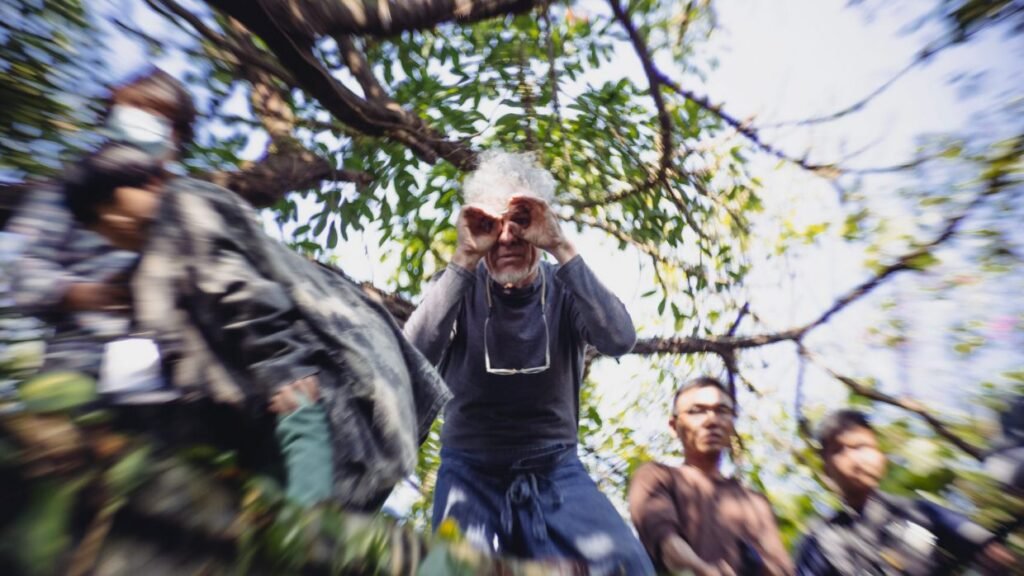
Table of Contents
The Road Less Traveled: From Nomad to Visual Poet
Christopher Doyle’s path to becoming a master of cinematography was anything but conventional. At the tender age of 18, fueled by an insatiable hunger for adventure and self-discovery, Doyle bid farewell to his native Australia and set out on a life-altering journey as a sailor. This formative experience not only broadened his horizons but also laid the groundwork for his future endeavors, imbuing his work with a deep understanding of the human experience and a profound appreciation for the beauty of cross-cultural influences.
Doyle’s transformative odyssey led him to Taiwan in the 1970s, where he began to explore his artistic inclinations, immersing himself in various creative pursuits such as mixed-media painting and paper collage. His fluency in Mandarin, which he acquired during his time studying at the Chinese University of Hong Kong, proved to be an invaluable asset, enabling him to establish strong connections within the Taiwanese and Hong Kong film industries.
The birth of Christopher Doyle, the cinematographer, can be traced back to his fateful collaboration with Taiwanese director Edward Yang on the film “That Day, on the Beach” in 1983. This seminal work marked the beginning of Doyle’s extraordinary career, showcasing his innate ability to translate raw emotions and atmospheric nuances into visually stunning images that captivate and inspire.
The Wong Kar-wai Era: Redefining the Visual Language of Hong Kong Cinema
Christopher Doyle’s meteoric rise to international acclaim is inextricably linked to his long-standing and transformative partnership with Hong Kong auteur Wong Kar-wai. Their creative collaboration, which began with the film “Days of Being Wild” in 1991, has given birth to some of the most visually spellbinding and emotionally resonant works in contemporary Asian cinema.
Doyle’s cinematography in Wong Kar-wai’s films is characterized by a masterful manipulation of color, light, and composition, creating a visual poetry that is both mesmerizing and deeply affecting. In the iconic “Chungking Express” (1994), Doyle’s kinetic camerawork and neon-drenched visuals perfectly encapsulate the frenetic energy and urban alienation of Hong Kong’s youth. The film’s fragmented narrative and dream-like atmosphere are enhanced by Doyle’s innovative use of step-printing and wide-angle lenses, creating an immersive sensory experience that plunges the viewer into the characters’ emotional turmoil.
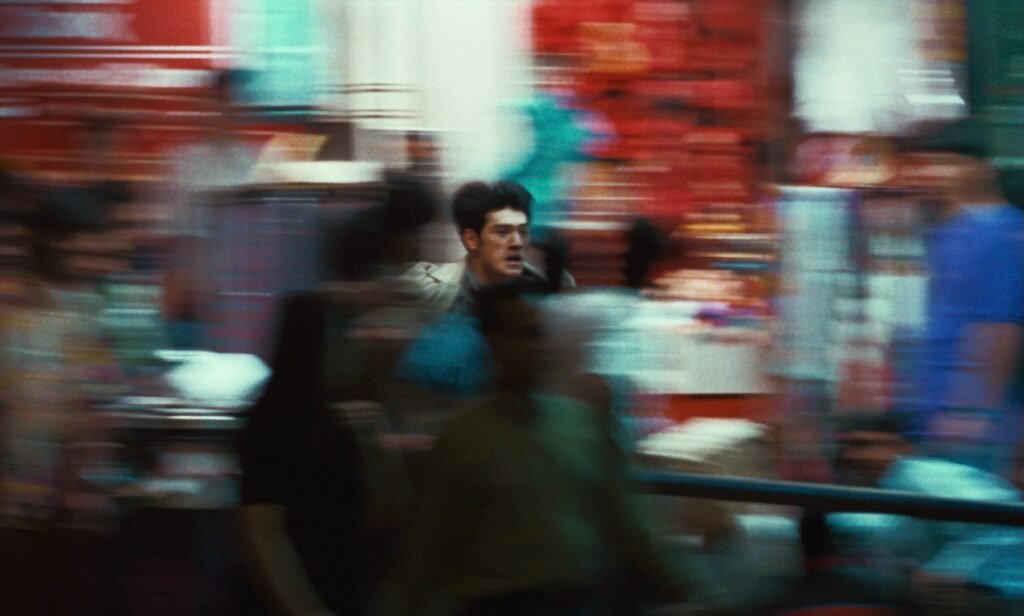
“In the Mood for Love” (2000), another landmark collaboration between Doyle and Wong Kar-wai, exemplifies the cinematographer‘s unparalleled ability to create intimate and emotionally charged spaces that pulsate with unspoken desires and repressed emotions. The film’s lush, saturated colors and meticulously composed frames evoke a palpable sense of longing and yearning, mirroring the central characters’ innermost feelings. Doyle’s strategic use of doorways, corridors, and mirrors not only adds visual depth to the film but also serves as a powerful metaphor for the characters’ psychological and emotional states, inviting the viewer to delve deeper into their complex inner worlds.
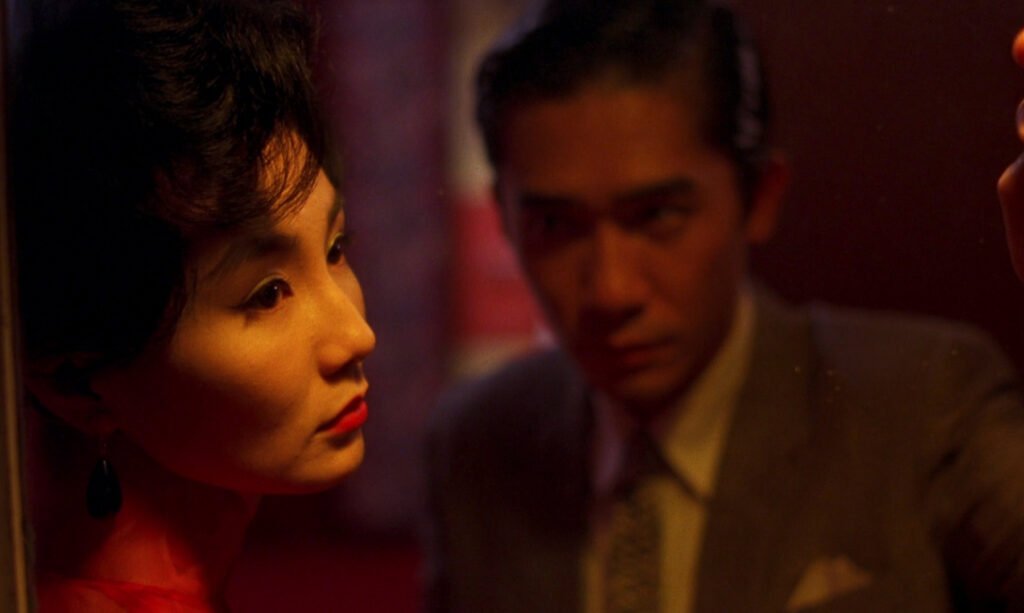
Other notable collaborations between Doyle and Wong Kar-wai include “Ashes of Time” (1994), “Happy Together” (1997), and “2046” (2004), each a testament to Doyle’s remarkable versatility as a cinematographer, his ability to adapt to diverse genres and narrative styles, and his unwavering dedication to crafting visually arresting and emotionally resonant cinema that pushes the boundaries of the medium.
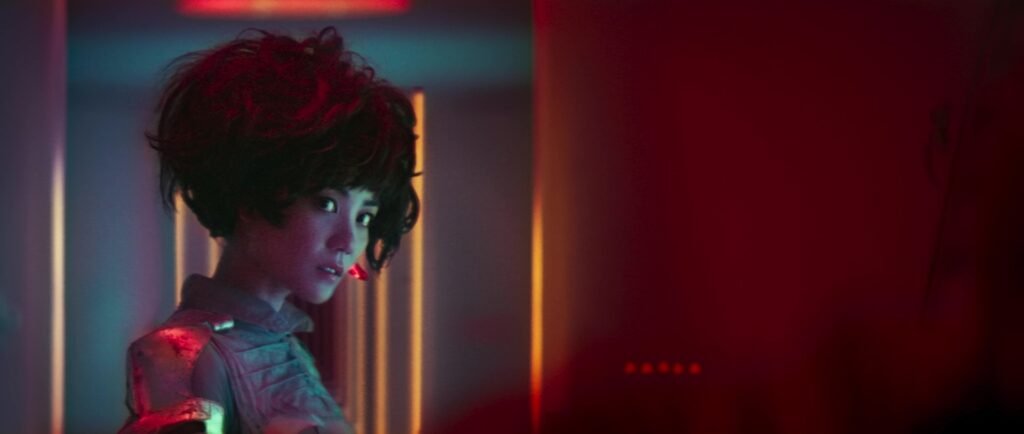
Global Impact: Christopher Doyle’s Cinematic Journeys Beyond Borders
While Christopher Doyle’s collaborations with Wong Kar-wai have been pivotal to his career, his influence extends far beyond the realm of Hong Kong cinema. Doyle has worked with a diverse array of filmmakers from around the world, bringing his distinctive vision and expertise to each project, and leaving an indelible mark on the global film landscape.
In mainland China, Doyle has collaborated with acclaimed director Zhang Yimou on visually stunning wuxia epics such as “Hero” (2002) and “House of Flying Daggers” (2004). These films showcase Doyle’s remarkable ability to create breathtakingly poetic images that capture the grandeur and beauty of ancient China, transporting the viewer to a world of mythic proportions. His masterful use of vibrant colors, fluid camera movements, and intricate compositions elevate the films’ martial arts sequences to the level of visual poetry, pushing the boundaries of the genre and setting new standards for cinematic aesthetics.
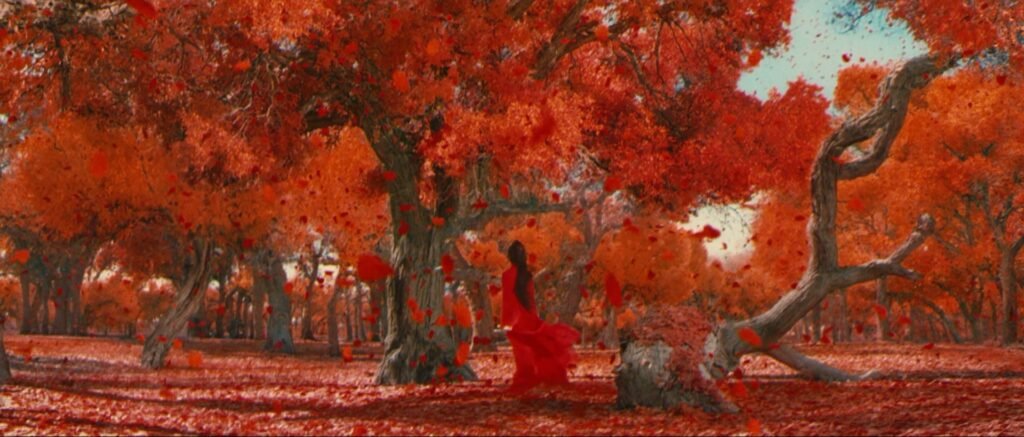
Doyle’s artistic vision has also found expression in Hollywood, where he has collaborated with renowned directors such as Gus Van Sant on films like “Paranoid Park” (2007) and “The Sea of Trees” (2015). In these works, Doyle’s cinematography adds a layer of introspection and emotional depth to the characters’ inner struggles, crafting a visual language that complements and enhances the directors’ unique artistic sensibilities, and inviting the viewer to explore the complexities of the human psyche.
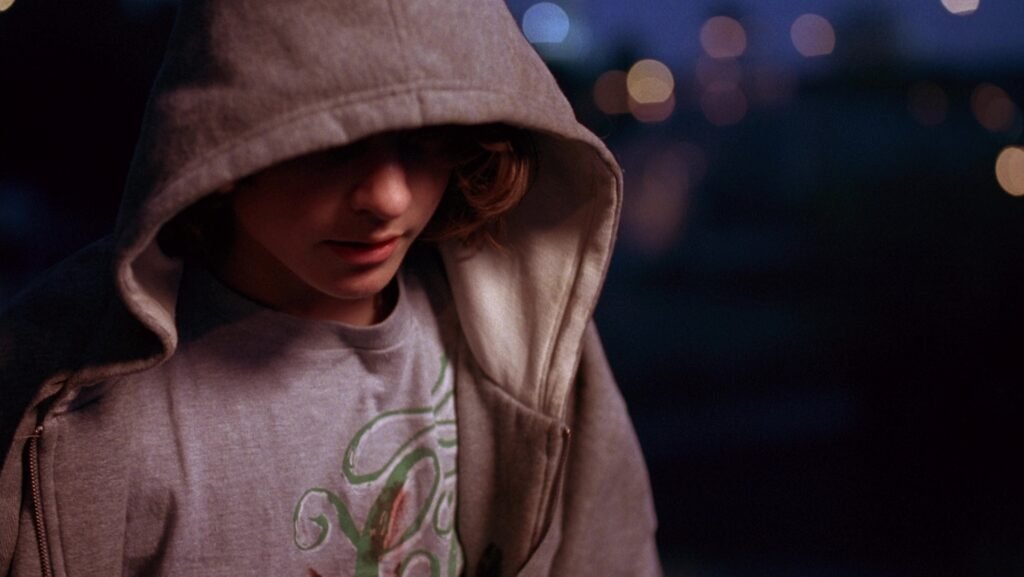
The far-reaching influence of Christopher Doyle’s work can be seen in the films of countless filmmakers and cinematographers who have drawn inspiration from his innovative approach to visual storytelling. His signature use of handheld cameras, natural lighting, and unconventional framing has become a hallmark of independent and art-house cinema, influencing a new generation of filmmakers who seek to push the boundaries of the medium and explore new frontiers of cinematic expression.
The Philosophy of Christopher Doyle: Capturing the Essence of Life Through the Lens
At the heart of Christopher Doyle’s work lies a profound commitment to capturing the very essence of life through his lens, to distilling the raw, unfiltered truth of the human experience into images that resonate long after the final frame has faded to black. His approach to cinematography is rooted in a deeply held belief that the camera should serve as an extension of the human eye, a tool for exploring the world and the human condition in all its complexity, beauty, and raw emotion.
Doyle’s philosophy is perhaps best encapsulated in his own words: “I don’t want to make films that are just about pretty pictures. I want to make films that are about the human condition, about the way we live, about the way we love, about the way we hate, about the way we dream”. This guiding principle is evident in every frame of his work, from the gritty realism of his early films to the poetic visual language of his later collaborations, each a testament to his unwavering commitment to capturing the truth of the moment, no matter how painful or beautiful it may be.
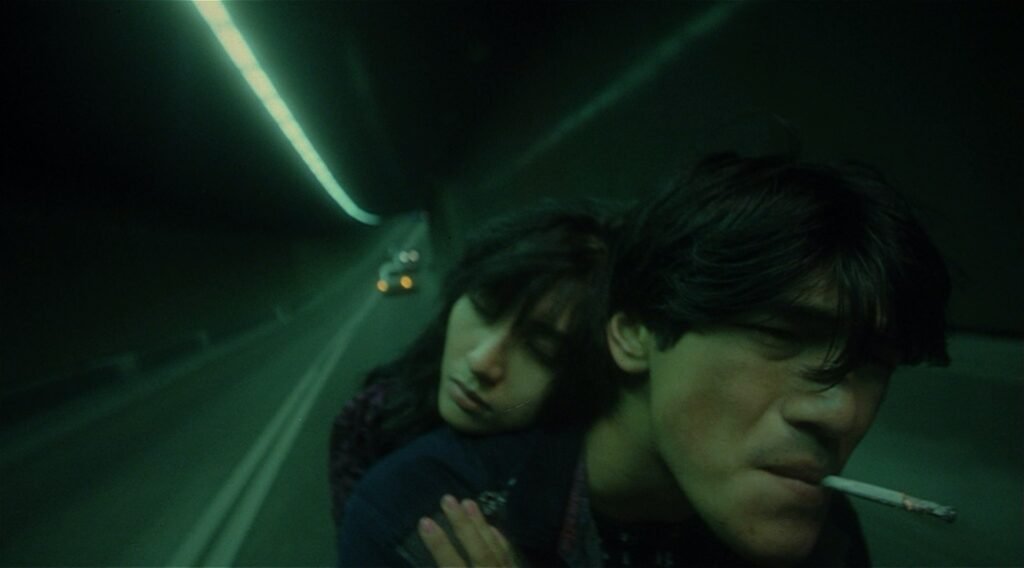
Doyle’s steadfast dedication to authenticity is reflected in his use of natural lighting, which he often employs to create a sense of realism and immediacy in his images, stripping away the artifice of the cinematic apparatus to reveal the raw, unvarnished reality beneath. By embracing the imperfections and variations of available light, Doyle’s cinematography captures the pulsating energy and emotion of the moment, crafting a visual language that feels both intimate and timeless, inviting the viewer to step into the frame and experience the world through his lens.
Equally unconventional is Doyle’s approach to framing and composition, which often defies the established rules of cinematography in favor of a more intuitive, expressive style. He frequently employs wide-angle lenses and low camera angles to create a sense of intimacy and vulnerability, drawing the viewer into the emotional world of the characters and inviting them to share in their joys, sorrows, and innermost secrets. His use of unorthodox framing, such as placing characters at the edges of the frame or obscuring their faces, adds a layer of ambiguity and mystery to his images, challenging the viewer to look beyond the surface and engage with the film on a deeper, more intuitive level.
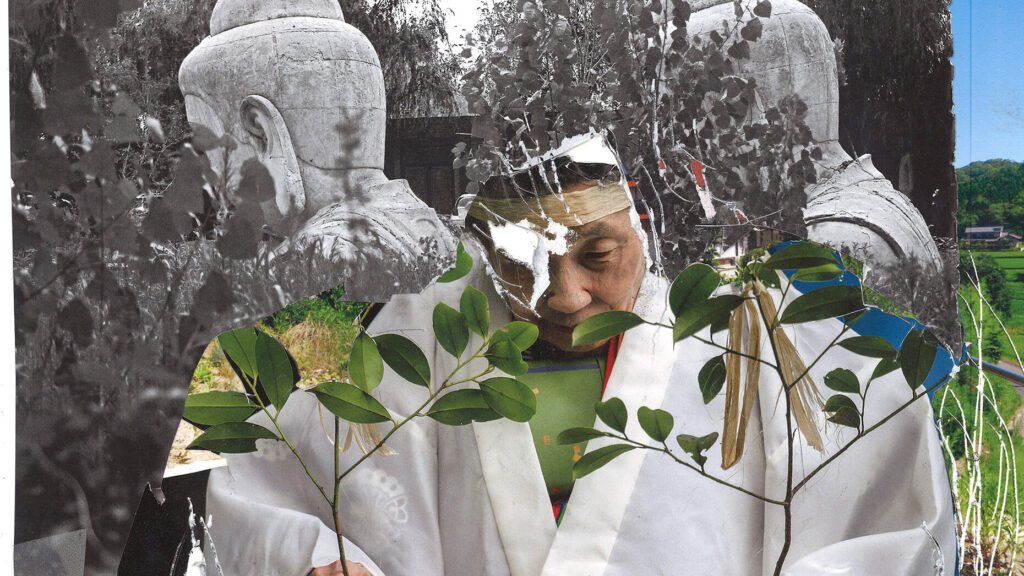
The Legacy of Cinematographer Christopher Doyle: Inspiring Future Generations of Filmmakers
Christopher Doyle’s impact on the world of cinema extends far beyond his own films, his influence rippling out across the globe like a stone cast into a still pond. His unique approach to cinematography, his unwavering commitment to capturing the essence of life through his lens, and his willingness to take risks and push the boundaries of the medium have inspired countless filmmakers and cinematographers around the world, each seeking to follow in his footsteps and carve their own path through the ever-evolving landscape of cinema.
Doyle’s influence can be seen in the works of a new generation of Asian filmmakers, such as Apichatpong Weerasethakul, Hou Hsiao-hsien, and Bi Gan, who have embraced his poetic and unconventional approach to visual storytelling, creating films that challenge traditional narrative structures and explore the emotional and psychological depths of the human experience. These filmmakers have built upon Doyle’s legacy, pushing the boundaries of cinema even further and creating works that are at once deeply personal and universally resonant.
Beyond Asia, Doyle’s impact can be felt in the works of filmmakers and cinematographers around the world who have been inspired by his unique vision and innovative techniques. His use of natural lighting, handheld cameras, and unconventional framing has become a staple of independent and art-house cinema, influencing films as diverse as “Eternal Sunshine of the Spotless Mind” (2004) and “Moonlight” (2016), each a testament to the enduring power of his cinematic vision.
Doyle’s legacy also extends to his role as a mentor and teacher, a guiding light for the next generation of filmmakers and cinematographers. Throughout his career, he has been committed to nurturing young talent and sharing his knowledge and expertise with aspiring artists, teaching at film schools around the world, including the Hong Kong Academy for Performing Arts and the NYU Tisch School of the Arts. Through his teachings, Doyle has inspired and guided countless young cinematographers as they develop their own unique vision and style, passing the torch of cinematic innovation to a new generation of dreamers and visionaries.
Conclusion
Christopher Doyle’s extraordinary journey from a young sailor to a globally acclaimed cinematographer is a testament to the transformative power of passion, innovation, and the indomitable human spirit. Through his groundbreaking collaborations with visionary filmmakers such as Wong Kar-wai, Zhang Yimou, and Gus Van Sant, Doyle has redefined the language of cinema, crafting a visual poetry that captures the very essence of life in all its beauty, complexity, and raw emotion.
Doyle’s unique approach to cinematography, his unwavering commitment to capturing the human condition through his lens, and his fearless willingness to push the boundaries of the medium have inspired a new generation of filmmakers and cinematographers around the world, each seeking to follow in his footsteps and explore the infinite possibilities of the cinematic form. His enduring legacy extends far beyond his own films, influencing the course of contemporary cinema and shaping the way we perceive and experience the world through the power of the moving image.
As we look to the future of cinema, Christopher Doyle’s work stands as a luminous beacon, a shining example of what can be achieved when passion, creativity, and innovation are combined in the pursuit of artistic truth. His films will continue to inspire and influence generations of filmmakers and cinephiles, illuminating the beauty and complexity of the human experience and reminding us of the transformative power of art in a world that is all too often shrouded in darkness.
In the end, Christopher Doyle’s legacy is not just that of a master cinematographer, but of an artist who dared to dream, to push beyond the boundaries of the possible and venture into uncharted territories of the imagination. Through his lens, he has shown us the world as it is and as it could be, inviting us to look beyond the surface and discover the poetry that lies hidden in the everyday. And for that, we are forever in his debt, forever grateful for the gift of his vision, his passion, and his unwavering commitment to the art of cinema.
Christopher Doyle Filmography
- Hunters in the Dark
- Morte Cucina
- Late in Summer
- WVAG in New York City
- Just 1 Day (2021)
- Ouverture of Something that Never Ended (2020)
- Love After Love (2020)
- Tezuka’s Barbara (2019)
- They Say Nothing Stays the Same (2019)
- Cuba (2019)
- The Rest (2019)
- To Heaven, to Gather (2018)
- Anthony Bourdain: Parts Unknown (2018)
- Love Only (2018)
- The White Girl (2017)
- Human Flow (2017)
- You Mean the World to Me (2017)
- Stockholm, My Love (2016)
- Wind (2016)
- Endless Poetry (2016)
- Enishi: The Bride of Izumo (2015)
- Hong Kong Trilogy: Preschooled Preoccupied Preposterous (2015)
- Fundamentally Happy (2015)
- I Am Belfast (2015)
- Port of Call (2015)
- Beijing, Niuyue (2015)
- I Am Here (2014)
- Ruined Heart: Another Lovestory Between a Criminal & a Whore (2014)
- Sandstorm (2014)
- Christopher Doyle: Filming in the Neon World (2014)
- The Boy and the Bus (2014)
- Blue Sky Bones (2013)
- A Good Story (2013)
- Bends (2013)
- American Dreams in China (2013)
- Magic Magic (2013)
- Linda Linda (2012)
- White Sand: Dirty Beaches (2011)
- Ólöf Arnalds: Surrender (2011)
- Tormented (2011)
- Til Death Do Us Part (2011)
- Underwater Love (2011)
- Passion Play (2010)
- Showtime (2010)
- Ocean Heaven (2010)
- Ondine (2009)
- The Limits of Control (2009)
- Sigur Rós: Gobbledigook (2009)
- Downloading Nancy (2008)
- Meeting Helen (2007)
- Paranoid Park (2007)
- The Madness of the Dance (2006)
- Justin Timberlake Feat. Timbaland: Sexyback (2006)
- Lady in the Water (2006)
- Digital Sam in Sam Saek 2006: Talk to Her (2006)
- Invisible Waves (2006)
- The Strokes: Juicebox (2005)
- The White Countess (2005)
- The Hand (2004)
- Eros (2004)
- Three… Extremes (2004)
- Dumplings (2004)
- 2046 (2004)
- Green Tea (2003)
- Last Life in the Universe (2003)
- Following the Rabbit-Proof Fence (2002)
- Hero (2002)
- Six Days (2002)
- The Quiet American (2002)
- 3 Extremes II (2002)
- Rabbit-Proof Fence (2002)
- Made (2001)
- In the Mood for Love (2000)
- Liberty Heights (1999)
- Away with Words (1999)
- Motorola (1998)
- Psycho (1998)
- Century of Cinema (1998)
- First Love: Litter on the Breeze (1997)
- Motel Cactus (1997)
- Happy Together (1997)
- wkw/tk/1996@7’55”hk.net (1996)
- 4 Faces of Eve (1996)
- Temptress Moon (1996)
- Tri-Star (1996)
- Rich and Famous (1995)
- Before the Sunrise (1995)
- Fallen Angels (1995)
- The Peony Pavilion (1995)
- Red Rose White Rose (1994)
- The Red Lotus Society (1994)
- Ashes of Time (1994)
- Chungking Express (1994)
- Mary from Beijing (1992)
- Secret Love in Peach Blossom Land (1992)
- Days of Being Wild (1990)
- I Am Sorry (1989)
- My Heart Is That Eternal Rose (1989)
- Burning Snow (1988)
- Noir et blanc (1986)
- Soul (1986)
- The Gift of A-Fu (1984)
- That Day, on the Beach (1983)
Who is Christopher Doyle and what is his impact on cinematography?
Christopher Doyle is an Australian-Hong Kong cinematographer known for his highly influential and innovative work in film. He has collaborated extensively with renowned directors like Wong Kar-wai, helping shape the distinct visual style of the Hong Kong New Wave cinema movement.
Doyle’s cinematography is characterized by bold colors, experimental techniques, and evocative lighting that enhances the emotional resonance of the stories being told. His fluid, kinetic camerawork and impressionistic use of color and composition have had a profound impact on modern visual storytelling in Asian and world cinema. Doyle’s influence can be seen in the work of many contemporary filmmakers and cinematographers.
What are some of Christopher Doyle’s most iconic films and what makes them visually unique?
Some of Christopher Doyle’s most iconic and visually striking films include:
Chungking Express (1994) – Doyle’s vibrant, saturated colors and frenetic handheld camerawork capture the energy and romance of Hong Kong.
In the Mood for Love (2000) – Doyle’s sensuous, richly hued cinematography evokes the longing and restraint between the two lead characters. His use of color, patterned wallpaper, and corridors create a dreamlike, nostalgic atmosphere.
Hero (2002) – Doyle’s sweeping landscapes and color-coded visual design bring an epic, operatic grandeur to this wuxia film. Each color symbolizes a different character’s memory and perspective.
Fallen Angels (1995) – Doyle employs canted angles, neon-soaked nightscapes, and a restless camera to express the alienation and disconnection of the characters in Wong Kar-wai’s fragmented urban drama.
How has Christopher Doyle’s background influenced his cinematography style?
Christopher Doyle’s multicultural background and wide-ranging life experiences have greatly influenced his artistry and approach to cinematography. Born in Australia, Doyle spent formative years traveling the world, studying various disciplines like Chinese language, philosophy, and art.
His interest in Asian culture and philosophy, particularly Daoism and Buddhism, deeply informs the spiritual and humanist qualities of his work. Doyle sees cinematography as a way to explore existential questions and the inner worlds of characters.
Having lived a bohemian lifestyle and worked odd jobs from oil drilling to traveling circus performer, Doyle brings a sense of spontaneity, adaptability and life experience to his craft. He favors intuitive, improvisational techniques over technical perfectionism to capture authentic moments of human truth and poetic reality.
Doyle’s artistic vision is also heavily influenced by other mediums like painting, music and street photography. His cinematography often blurs the line between realism and expressionism, using bold aesthetics to externalize characters’ psychological states and perceptions. This hybrid, cross-cultural visual style, marrying Eastern and Western elements, has become Doyle’s signature and a key part of his enduring impact on world cinema.